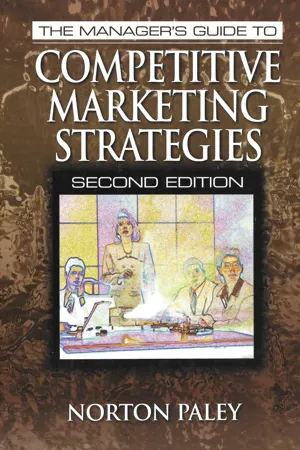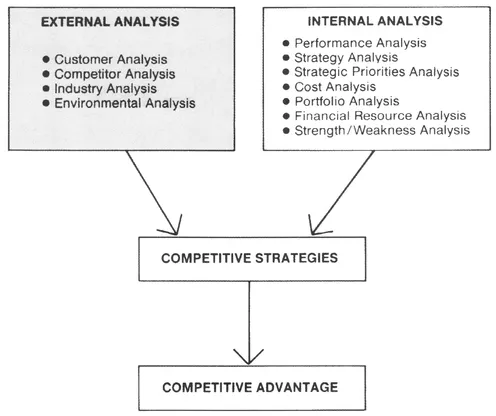
- 448 pages
- English
- ePUB (mobile friendly)
- Available on iOS & Android
The Manager's Guide to Competitive Marketing Strategies, Second Edition
About this book
The ability to think strategically is permeating every level of successful organizations - particularly among senior executives and line managers responsible for maintaining a competitive advantage for their products and services. Above all, Manager's Guide to Creative Marketing Strategies is a pragmatic examination of a 21st century manager.The second edition of this popular book will update you on the latest techniques for developing competitive strategies. It examines how to apply strategies and tactics in a confusing global mixture of hostile competitors, breakthrough technologies, emerging markets, fickle customer behavior, and diverse cultures.You will gain practical information about what strategy is, how competitive intelligence contributes to successful strategies - and how to put it all together. The book is an all-in-one resource for analyzing, planning, and developing competitive strategies, a workbook with checklists and forms, and a reference with numerous case histories.
Frequently asked questions
- Essential is ideal for learners and professionals who enjoy exploring a wide range of subjects. Access the Essential Library with 800,000+ trusted titles and best-sellers across business, personal growth, and the humanities. Includes unlimited reading time and Standard Read Aloud voice.
- Complete: Perfect for advanced learners and researchers needing full, unrestricted access. Unlock 1.4M+ books across hundreds of subjects, including academic and specialized titles. The Complete Plan also includes advanced features like Premium Read Aloud and Research Assistant.
Please note we cannot support devices running on iOS 13 and Android 7 or earlier. Learn more about using the app.
Information
II THE FRAMEWORK FOR COMPETITIVE ANALYSIS
2 EXTERNAL ANALYSIS
CHAPTER OBJECTIVES
- Identify the factors related to a customer analysis by segment, behavior, and wants and needs.
- Conduct a competitor analysis by products, distribution, communications, operations, R&D, overall costs, financial strength, organization, managerial capabilities, and market-product portfolio.
- Design an industry analysis by size, dimension, cost structure, distribution systems, industry trends, technology development, and stage in the industry life cycle.
- Develop an environmental analysis by economics, natural resources, legislation, demographics, and socio-cultural values.
CUSTOMER ANALYSIS

Charles Schwab & Co.
Action Strategy
- Define your customers by demographic and psychographic (behavioral) characteristics. Observe changes in the character of your markets. For instance, look for any unmet customer needs that would enable you to respond rapidly in the form of products, services, methods of delivery, credit terms, or technical assistance. Talk with customers to detect their most troublesome problems and frustrations. Meet with sales people and draw them out on ways to innovate.
- Examine customer usage patterns or frequency of purchase. Watch for alternative and substitute products that could represent an opportunity to replace competitive products. Also observe deviations in regional and seasonal purchase patterns. Check for changes from past purchasing and usage practices th...
Table of contents
- Cover
- Half Title
- Title Page
- Copyright Page
- Dedication Page
- Table of Contents
- Introduction to the Second Edition
- The Author
- SECTION I: STRATEGY AND ITS BASIC PRINCIPLES
- SECTION II: THE FRAMEWORK FOR COMPETITIVE ANALYSIS
- SECTION III: MARKETING RESEARCH AND PLANNING
- SECTION IV: SPECIFIC COMPETITIVE STRATEGIES
- Appendix: Checklists for Developing Competitive Strategies
- Index